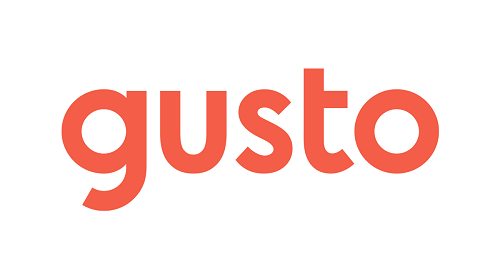Gusto is a cloud-based payroll, benefits, and human resources management software designed for small to medium-sized businesses. It is an online platform that simplifies and automates various administrative tasks related to managing employees and their compensation packages. Let’s explore about the Gusto success story!
Gusto was founded in 2011 and is based in San Francisco, California.
Some of the key features of Gusto include payroll management, benefits management, HR management, and compliance management. It offers a simple and intuitive user interface, making it easy for businesses to manage their employee payroll and benefits, and it integrates with a wide range of other software and tools, including accounting software, time tracking apps, and applicant tracking systems.
History of Gusto – Founders Story of Gusto
Gusto, originally known as ZenPayroll, was founded in 2011 by Joshua Reeves, Tomer London, and Edward Kim. The idea for Gusto came about when Reeves, who had worked at several startups, became frustrated with the complexities of managing payroll and benefits for his employees.

Together with London and Kim, Reeves set out to create a software platform that would simplify payroll and benefits management for small businesses. They believed that existing payroll software was too complex and outdated, and that there was a need for a more modern and user-friendly solution.
The team spent several months developing and testing their software, which they called ZenPayroll. In February 2012, they launched the product to the public, and it quickly gained traction among small business owners.
In the years that followed, ZenPayroll raised millions of dollars in funding from investors such as Google Ventures, Kleiner Perkins, and General Catalyst. The company also expanded its product offerings to include human resources management and compliance tools, and changed its name to Gusto in 2015.
Today, Gusto is used by over 100,000 businesses across the United States, and has offices in San Francisco, Denver, and New York. The company continues to innovate and expand its platform, with a focus on simplifying and automating the administrative tasks associated with managing employees and their compensation packages.
Business Model of Gusto – How does Gusto make money?
Gusto’s business model is based on a subscription-based software-as-a-service (SaaS) model. The company charges a monthly fee to businesses that use its platform to manage their payroll, benefits, and human resources.
The company offers four pricing plans, ranging from a basic plan that includes payroll processing and tax filings, to a comprehensive plan that includes HR tools, time tracking, and other advanced features. The pricing plans are tiered based on the number of employees a business has and the level of service they require.
In addition to its core payroll and benefits management services, Gusto generates revenue through a number of other sources, including:
Partner integrations: Gusto partners with a range of other software providers, including accounting software, time tracking apps, and applicant tracking systems. These partnerships allow Gusto to offer a more comprehensive solution to its customers and generate additional revenue through referral fees and revenue sharing agreements.
Additional services: Gusto offers a range of additional services, such as workers’ compensation insurance, 401(k) retirement plans, and health savings accounts. These services are designed to help businesses meet their compliance requirements and provide additional benefits to their employees.
Payment processing: Gusto also generates revenue through payment processing fees. The company processes payroll payments and other transactions on behalf of its customers, and charges a fee for each transaction.
Overall, Gusto’s business model is focused on providing a comprehensive and easy-to-use platform for small to medium-sized businesses to manage their payroll, benefits, and HR-related tasks, while generating revenue through a subscription-based model and additional services. The company’s focus on automation and compliance helps businesses save time and reduce the risk of costly errors, while its partnerships and additional services provide additional value to customers and generate additional revenue streams for the company.
Growth of Gusto over the years
Gusto has experienced significant growth over the years, as evidenced by several key performance indicators (KPIs). Some of the notable KPIs that demonstrate Gusto’s growth include:
Customer count: Gusto has grown its customer base significantly since its founding. As of 2021, the company has over 100,000 customers, which represents a significant increase from the 10,000 customers it had in 2015.
Revenue: Gusto’s revenue has also grown steadily over the years. The company generated an estimated $260 million in revenue in 2021, which represents a significant increase from the $100 million in revenue it generated in 2018.
Employee count: Gusto has also grown its employee count significantly over the years. As of 2021, the company has over 1,400 employees, up from just 200 employees in 2015.
Funding: Gusto has raised significant funding over the years, which has helped fuel its growth. The company has raised over $750 million in funding to date, with its most recent funding round in 2021 valuing the company at over $10 billion.
Net Promoter Score (NPS): Gusto has consistently achieved a high NPS, which is a measure of customer satisfaction and loyalty. As of 2021, Gusto’s NPS was 63, which is well above the industry average.
Overall, these KPIs demonstrate that Gusto has experienced significant growth since its founding, and that the company is continuing to expand its customer base, revenue, and employee count. The company’s high NPS also suggests that it has been successful in providing a high level of customer satisfaction, which is an important factor in its continued growth.
Funding and Investors of Gusto
Gusto has raised a total of $516 million in funding since its founding in 2011. Here is a breakdown of Gusto’s funding rounds:
Seed Round: In 2012, Gusto raised $6.1 million in a seed round led by General Catalyst Partners.
Series A: In 2014, Gusto raised $20 million in a series A round led by Google Capital and including previous investors General Catalyst Partners and Kleiner Perkins.
Series B: In 2015, Gusto raised $50 million in a series B round led by Dragoneer Investment Group and including Google Capital and previous investors General Catalyst Partners and Kleiner Perkins.
Series C: In 2018, Gusto raised $140 million in a series C round. Leading late-stage investors including portfolios managed by T. Rowe Price Associates, Inc., MSD Capital (Michael Dell), Dragoneer Investment Group and Y Combinator Continuity Fund participated and are joined by existing investors General Catalyst, CapitalG, Kleiner Perkins, 137 Ventures, Emergence Capital and others.
Series D: In 2019, Gusto raised $200 million in a series D round at $3.8 billion post-money, led by Fidelity Investments and including previous investors Dragoneer Investment Group, General Catalyst Partners, Google Capital, and Kleiner Perkins.
Series E: In 2021, Gusto raised $175M in Series E funding round at $10 billion valuation post funding round. The round was led by T. Rowe Price Associates, Inc., from new and existing investors Sands Capital, Fidelity Management and Research Company LLC, Durable Capital Partners LP, Generation Investment Management, Emerson Collective, Glynn Capital, Friends & Family Capital, Cross Creek, 137 Ventures, General Catalyst, Emergence Capital, Dragoneer Investment Group, Franklin Templeton, Acrew Diversify Capital Fund, and more
Debt Financing: In 2020, Gusto raised $50 million in debt financing led by Sixth Street Growth.
Overall, Gusto’s funding has been led by some of the most prominent venture capital firms in Silicon Valley, including General Catalyst Partners, Kleiner Perkins, and Google Capital. The company has also attracted significant interest from institutional investors, such as Fidelity Investments and Dragoneer Investment Group. Gusto has used this funding to expand its product offerings, hire additional staff, and accelerate its growth in the payroll and HR software market.
Competitors of Gusto
Gusto operates in the competitive payroll and HR software market, where it faces competition from a number of other players. Here are some of Gusto’s main competitors:
ADP: ADP is one of the largest payroll and HR software providers in the world, with a wide range of products and services. ADP serves businesses of all sizes, from small businesses to large enterprises, and offers solutions for payroll processing, tax compliance, HR management, time and attendance tracking, and more.
Paychex: Paychex is another major player in the payroll and HR software market. The company offers a range of solutions, including payroll processing, HR administration, time and attendance tracking, employee benefits, and more. Paychex serves businesses of all sizes, from small businesses to large enterprises.
Zenefits: Zenefits is a cloud-based HR software provider that offers solutions for payroll processing, benefits administration, compliance management, time and attendance tracking, and more. Zenefits serves small and mid-sized businesses and has gained popularity for its user-friendly platform and low pricing.
Rippling: Rippling is a payroll and HR software provider that offers a wide range of solutions, including payroll processing, benefits administration, time and attendance tracking, and more. Rippling differentiates itself with its all-in-one platform that combines HR, IT, and operations management.
Justworks: Justworks is a cloud-based HR software provider that offers solutions for payroll processing, benefits administration, compliance management, and more. Justworks serves small and mid-sized businesses and differentiates itself with its user-friendly platform and competitive pricing.
Overall, the payroll and HR software market is highly competitive, with a number of well-established players and new entrants vying for market share. While Gusto has gained popularity for its easy-to-use platform and comprehensive set of features, it faces strong competition from other providers who offer similar solutions.
Also Read: Revolutionizing HR Management: The Rise of Darwinbox
Future of Gusto
The future of Gusto looks promising as it continues to grow and expand its offerings. Here are some potential areas of growth for the company:
International Expansion: Gusto is currently available only in the United States, but there is potential for the company to expand internationally. This would involve adapting its platform to local regulations and requirements, but would also open up a large and growing market for the company.
Product Expansion: Gusto has already expanded beyond its core payroll and HR offerings to include benefits administration and other features. In the future, the company could continue to expand its product offerings to include new features such as time and attendance tracking, performance management, or employee engagement tools.
Partnerships and Integrations: Gusto already integrates with a number of third-party platforms, such as accounting software and employee benefits providers. In the future, the company could seek to expand these partnerships and integrations to provide a more seamless experience for its customers.
Artificial Intelligence and Automation: As with many software companies, Gusto could potentially leverage artificial intelligence and automation to improve its platform and streamline its processes. This could include automated payroll processing, intelligent HR recommendations, or predictive analytics.
Vertical Integration: Gusto could potentially seek to expand its offerings through vertical integration, such as acquiring or partnering with other companies in related areas such as recruiting or employee training. This would allow the company to offer a more comprehensive suite of services to its customers.
Overall, the future of Gusto looks bright as it continues to innovate and grow in the competitive payroll and HR software market. With a focus on user experience and a commitment to providing value to its customers, Gusto is well-positioned to continue its growth and success in the years to come.
To read more content like this, subscribe to our newsletter
Go to the full page to view and submit the form.


